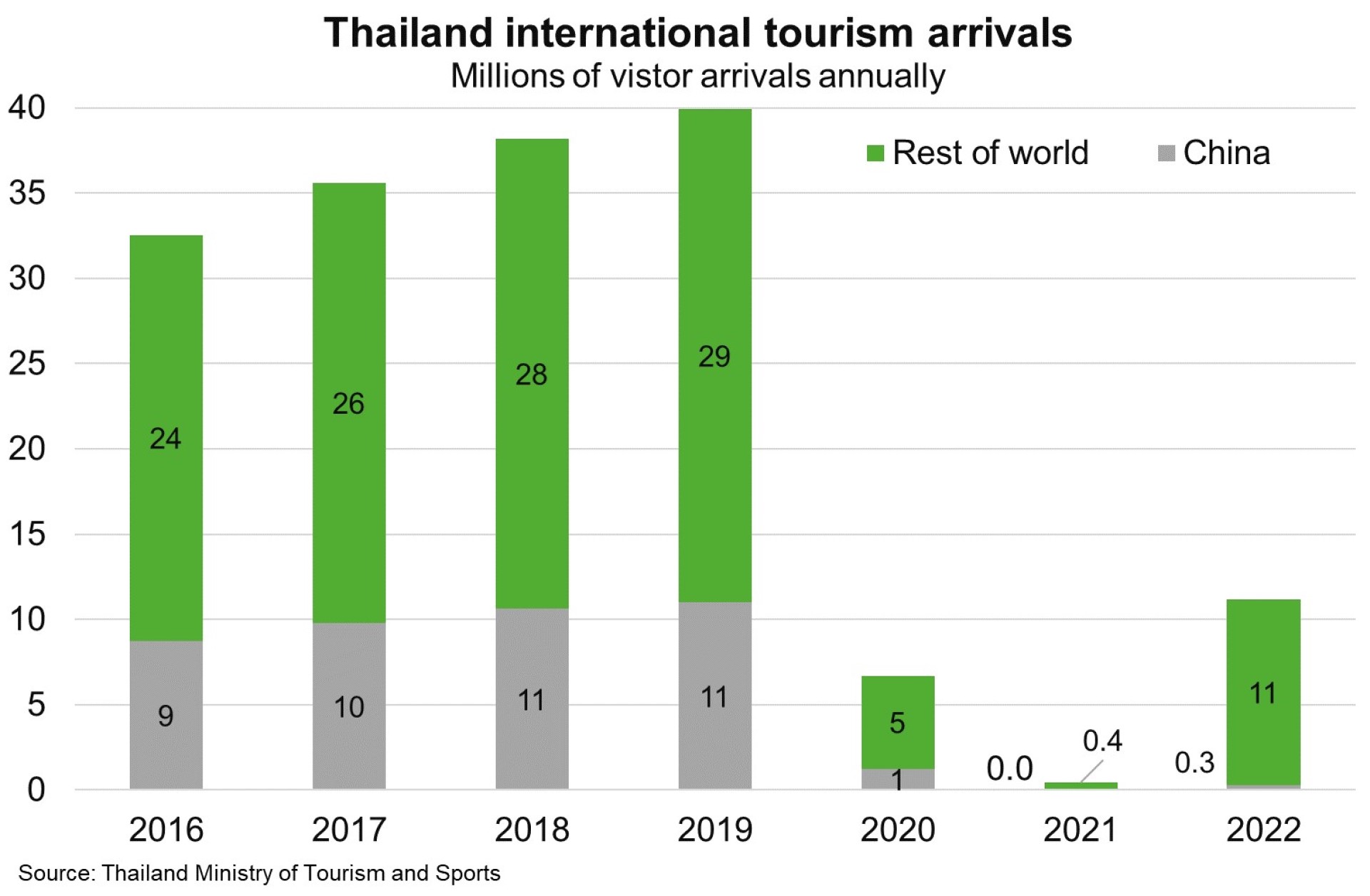Thailand—Economic outlook brightens as tourism recovery accelerates
Thailand’s large tourism sector—which contributed nearly 20% of GDP in 2019, when there were nearly 40 million arrivals—will benefit significantly from another year of open international borders and China’s reopening. The prolonged absence of tourists during the pandemic saw Thailand’s economic recovery lag Southeast Asian neighbours. Their return means Thailand’s growth will now accelerate in 2023 and 2024 while growth in other Southeast Asian economies moderates.
China made up 28% of all Thai tourist arrivals in 2019 and ranked among the top 10 destinations that Chinese holidaymakers would like to visit now that borders are open. That said, the rebound in Chinese visitors is likely to be gradual, given income and job losses sustained by Chinese households during the pandemic and lingering concern about catching COVID-19. Supply constraints could also limit the speed of Thailand’s tourism recovery, given many operators went out of business and workers migrated out of the sector during the pandemic. Political uncertainty associated with the May 2023 general election could also pose risks to Thailand’s tourism sector.
Notwithstanding several risks, the Tourism Council of Thailand expects international tourist arrivals to reach 30 million in 2023—and possibly more in the wake of China’s reopening—up from 11.2 million in 2022 and 428,000 in 2021 (Chart). More international visitors will boost employment and wages in Thailand’s services industries, in turn helping to lift domestic demand and offset headwinds from slowing global goods demand and rising interest rates.
Traditional exports of gold, coal, natural gas and aluminium to Thailand (Australia’s 13th largest export market) will benefit from the strengthening growth outlook. Australian agriculture exporters could also benefit from growing food and beverage demand from Thailand’s hotels and retail food sector.

